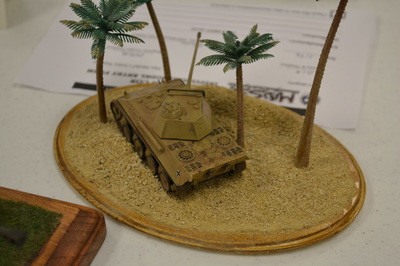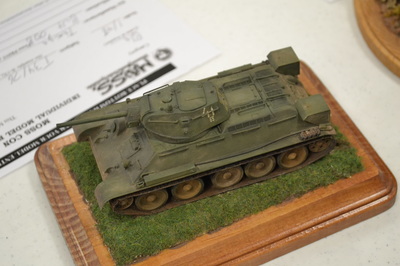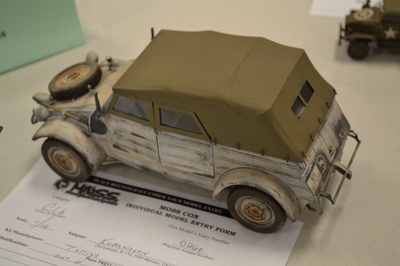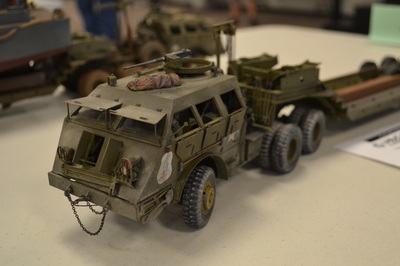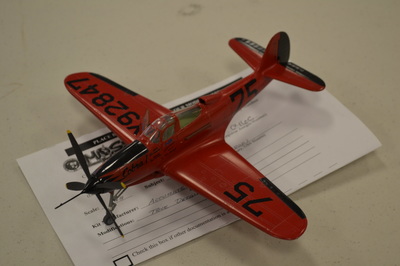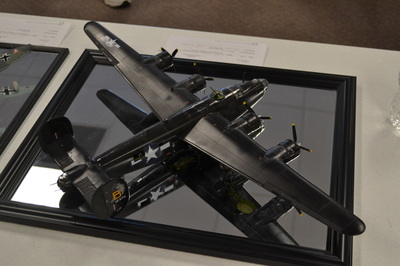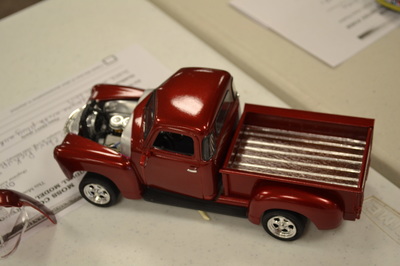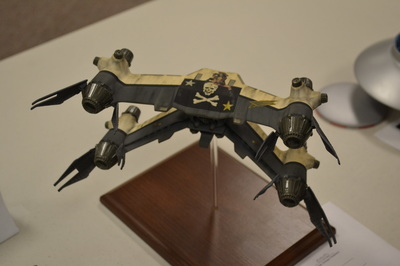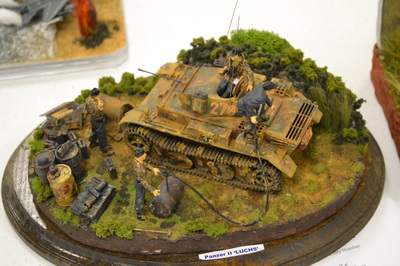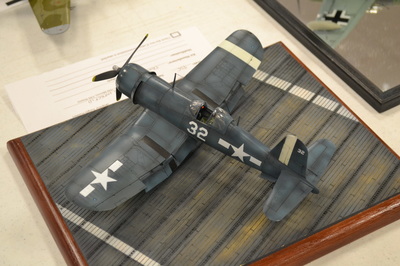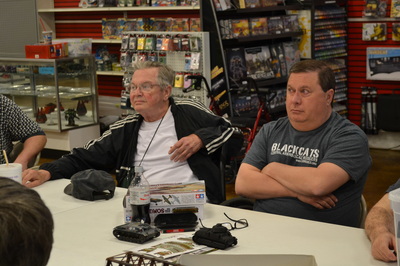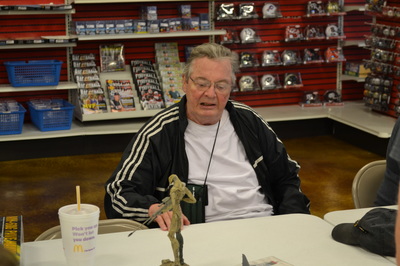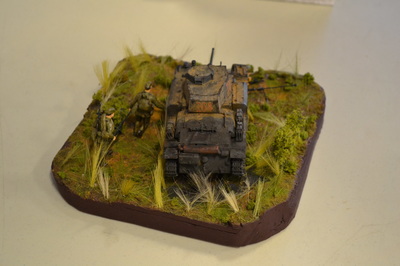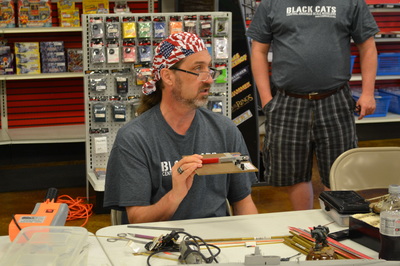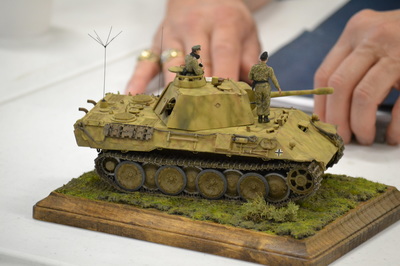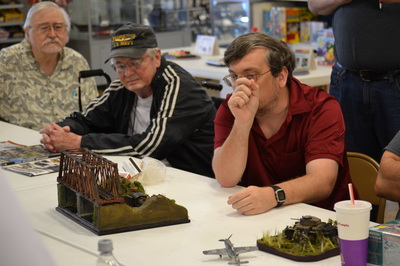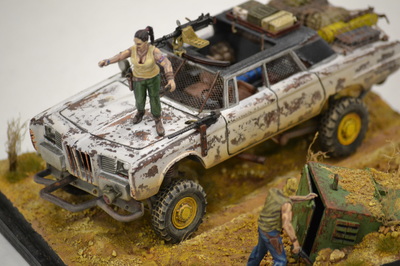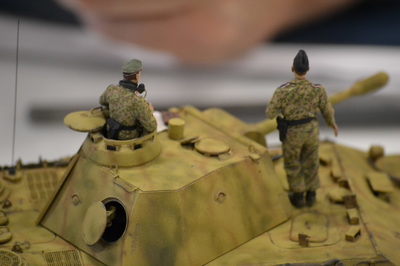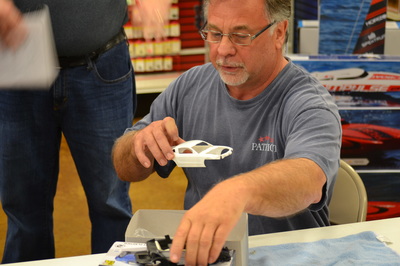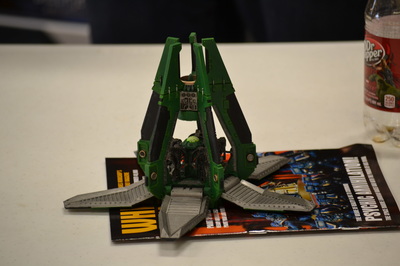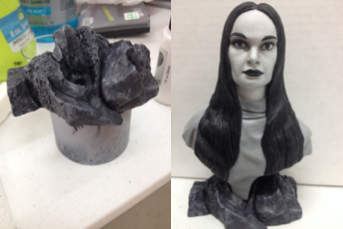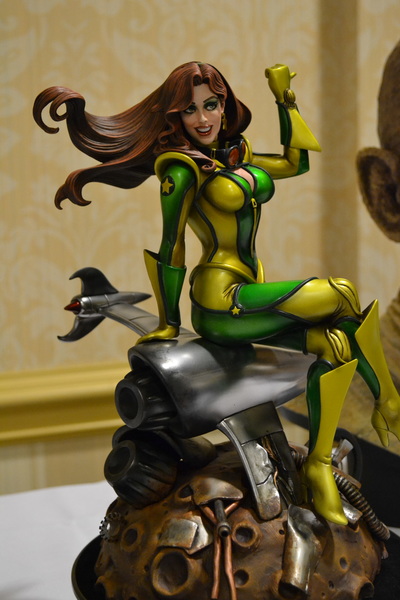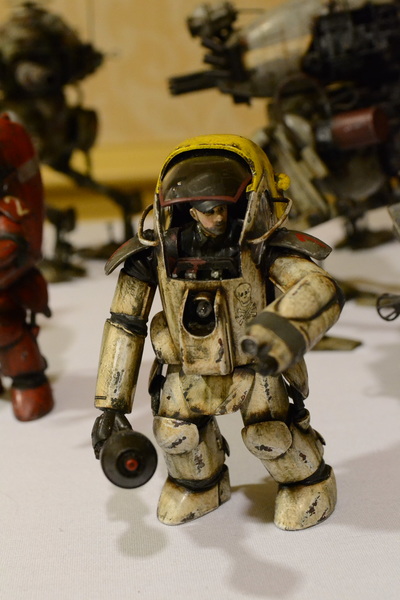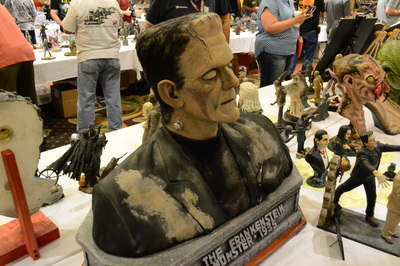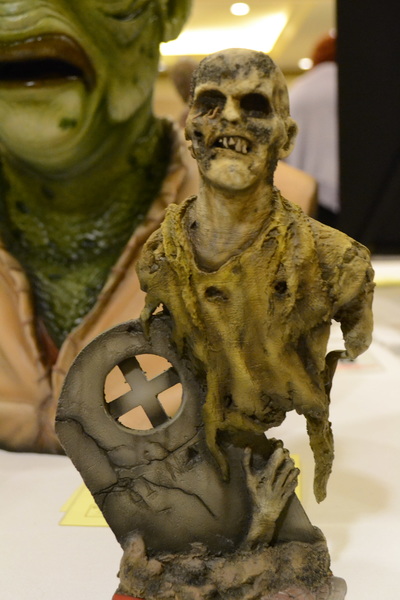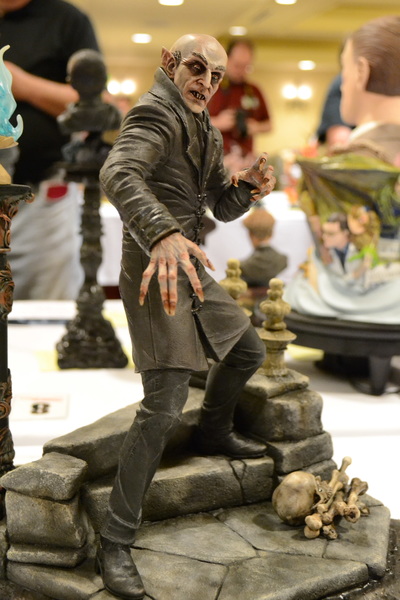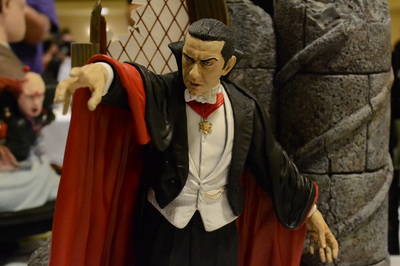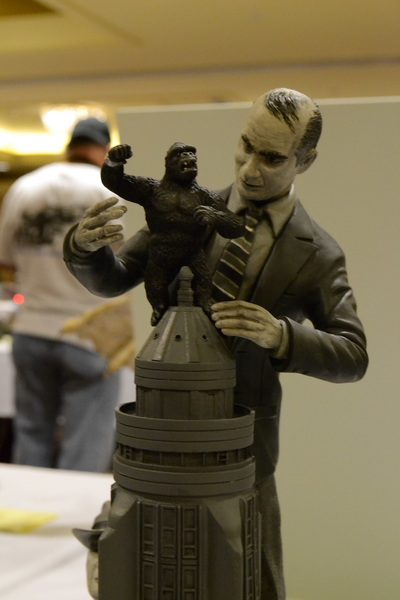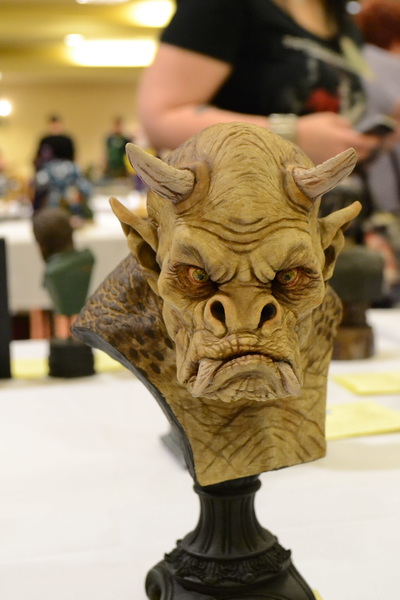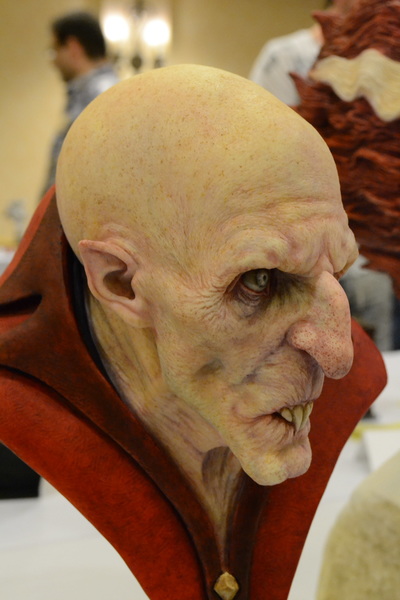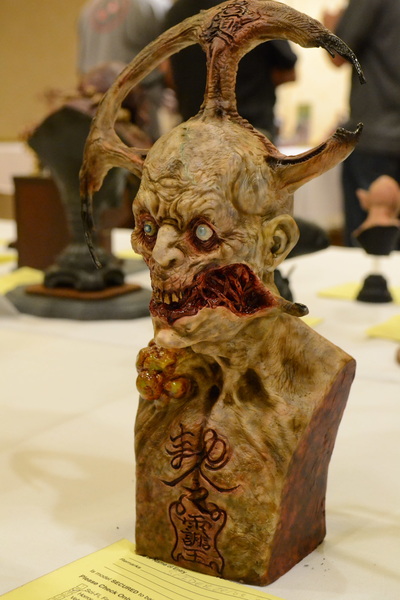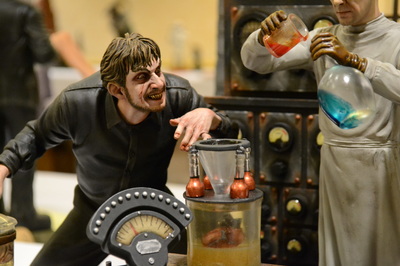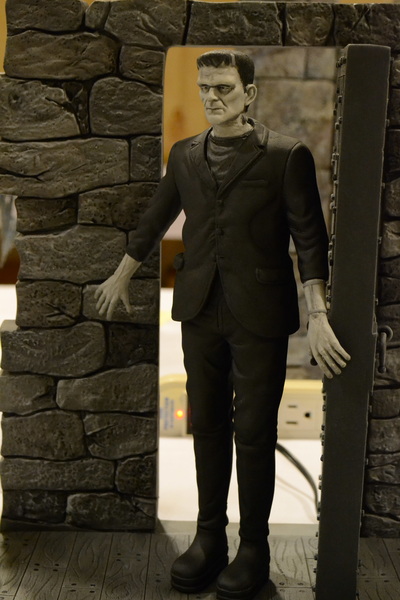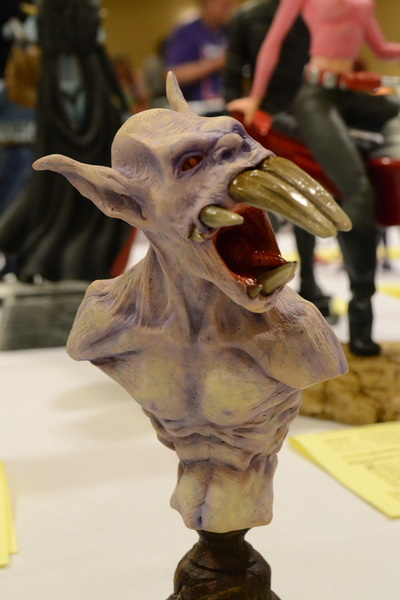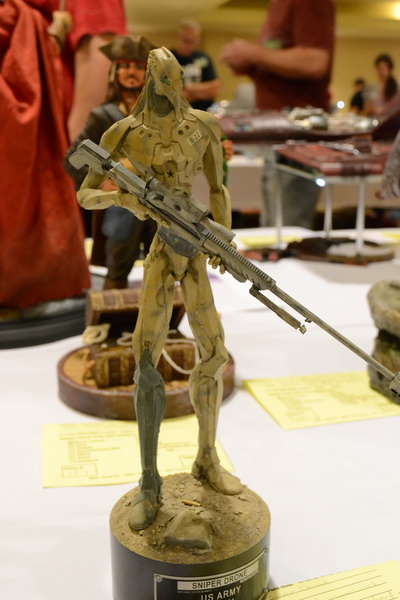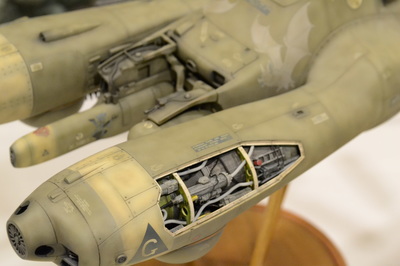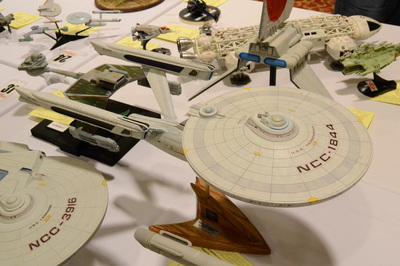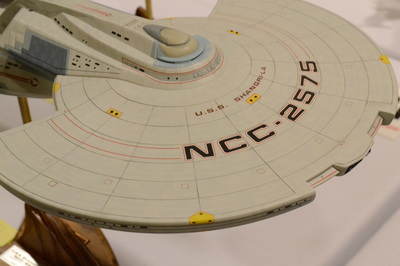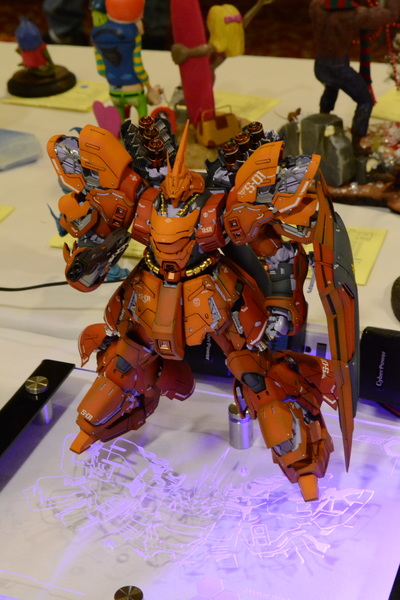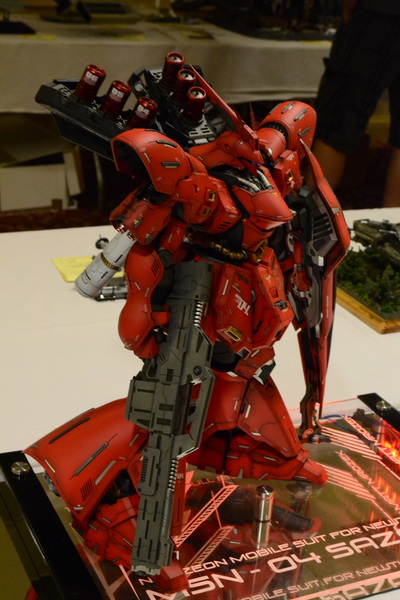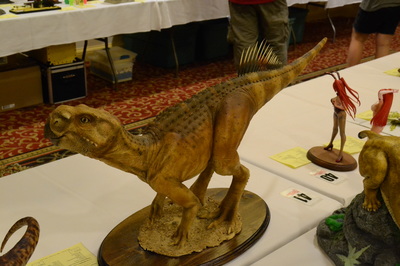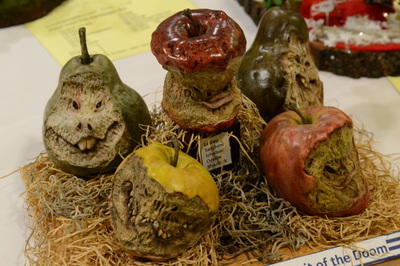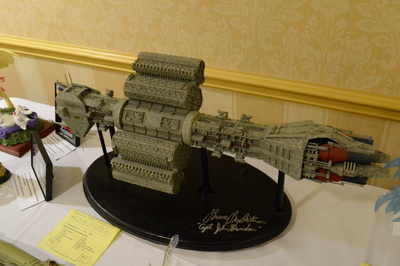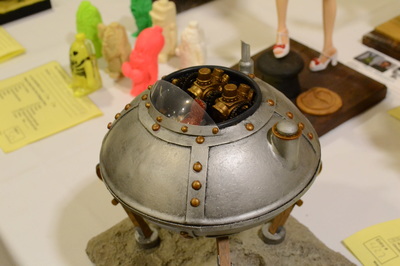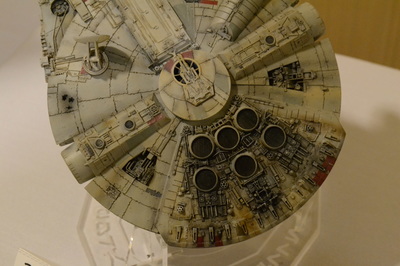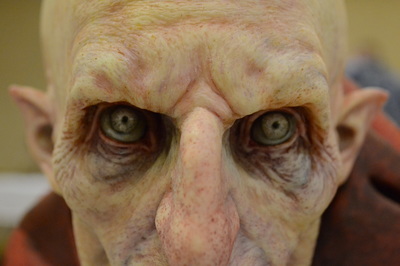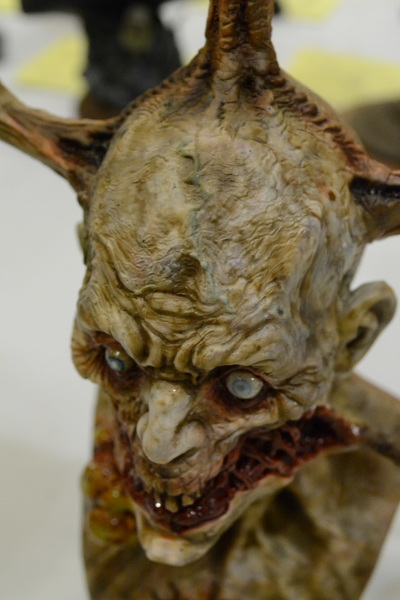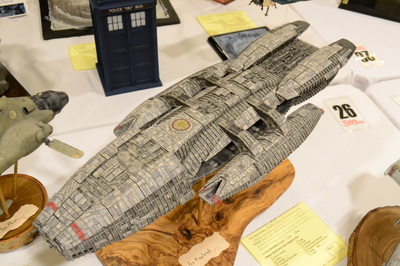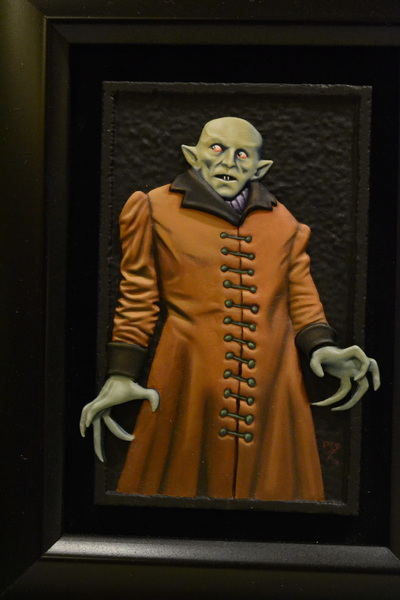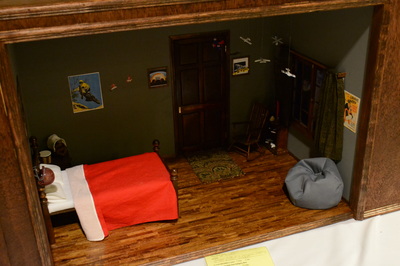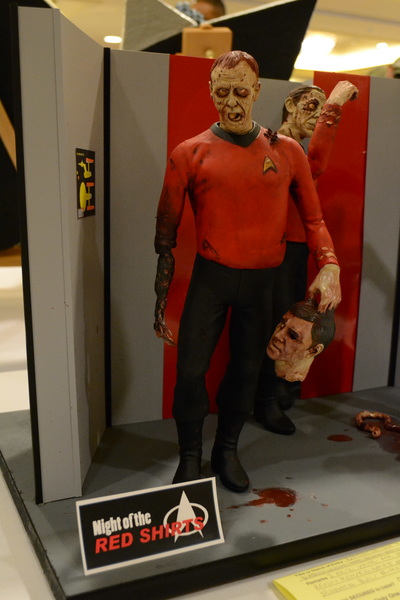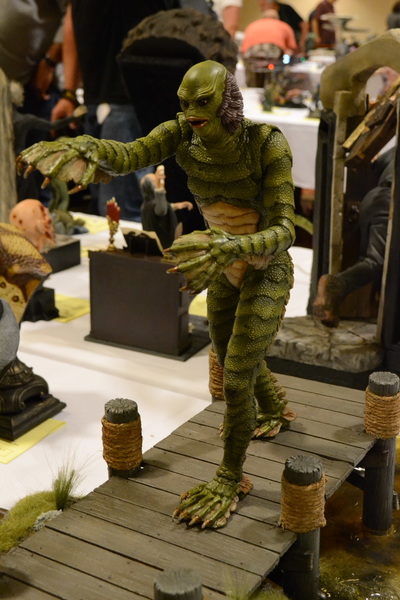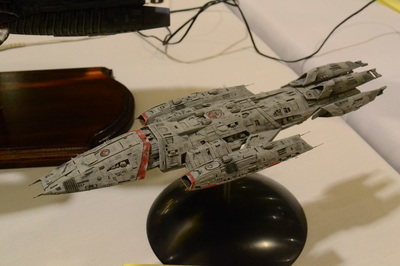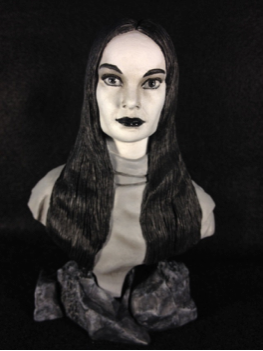 Black and white films and television shows have had a big impact upon our hobby. Subjects from classic horror, sci-fi, westerns, comedies, and war movies are available for modelers. While most of these are usually painted in color, as they would appear in the “real world,” it is nice to see the atmosphere of the black and white film captured on a model. I have long been interested in greyscale painting, but until recently, I have been apprehensive about trying it. I’ve spoken with many modelers that feel the same way and do not even know where to start. Hoping that it may help others interested in this technique, I’m documenting my first greyscale paint up. Before I could begin, I needed the right materials. First, I picked up a set of greyscale paint produced by Black Heart Enterprises. It comes in 6 shades from white to black, with 4 shades of neutral grey. The paints are airbrush ready, but also go on smoothly with a paint brush. I put a bit of each paint on an index card for a reference to compare against black and white photos. I will refer to these paints as #1-6, with #1 being white and #6 being black. Next, I had to get an appropriate primer. I used Duplicolor gray primer because it is a neutral gray and will blend with the Black Heart paints. It is a close match to the #3 paint. Next, I chose my model. I decided to paint Ray Santoreli’s new bust, called “Luna.” The bust comes in 2 pieces, the rock base, and the figure. Ray did an excellent job sculpting this piece, and his resin busts are usually already cleaned up when you get them. It took very little prep, a quick wash with mild soap, and it was ready for primer. I started by painting the face. I wanted her to have a pale appearance, but not pure white. After comparing my index card to some old black and white photos I found online, I added some of the #2 paint, light gray, to the #1 to create my base fleshtone. For the shadow areas, I used #2 and #3 greys, with #4 used in the eye make-up areas below the eyebrows. I started by airbrushing the base flesh, letting a little of the primer show through in the shadow areas, then airbrushing in deeper shadow areas, and using #1 white for my highlights. I then mixed my base coat with 91% alcohol to make a transparent wash, and misted it over the flesh to blend the colors. At this point, I felt the flesh was a little too grey, so I misted a mix of #1 and alcohol to lighten the values a bit. Once I was happy with it, I sealed with Testors clear dullcoat. At this point, I have to admit, the grey was throwing me a bit. To get a better perspective, I began blocking the hair with the #6 black paint using a paint brush. It helped, but I decided that the contrast between her dress and skin was what I really needed. Before proceeding, I masked her face with Silly Putty. I hadn’t done enough with the hair to worry about masking it. I mixed a little bit of #3 with #2, and airbrushed that on the dress for my basecoat, then airbrushed in #3 in the shadow areas and #2 in the highlights. Next, I sealed with dullcoat and blocked in more of the hair with a brush. Feeling that I was on the right track, I carefully blocked in all of the hair, eyebrows, and lips in the #6 black. Remember! By sealing the flesh and the dress with a lacquer dullcoat, I can wipe away mistakes with a damp Q-tip or cotton tipped micro applicator. This is very helpful when painting black around flesh and light colors. For the eyes, I started by base coating them with #1 mixed with a drop of #2 and dullcoating them. I then used black water color paint to block in the irises of the eye. I made sure that both sides were the same size and looking the same direction. By using water colors, I can easily wipe away any mistakes and start again. After about 3 attempts, I was satisfied, and moved on. After comparing my index card to old photos again, I covered my water color with #5, leaving some of the black showing around the edges. I then mixed #5 with some #4 and painted in highlights on both sides of each iris. I added more #4 to the mix and put in more highlights closer to the center of the irises. Then I took the #6 and carefully added the pupil. Next, I added a #1 highlight to the sclera (white of the eye). If I was painting this in color, I would use an off white or oyster color, but with the greyscale, the white worked well. I took some #2 and lined the inside of the bottom eyelid, then used the #6 to paint the upper and lower eyelashes. Once I was happy, I dullcoated this area. Painting the eyes was the most tedious and frustrating part of this build, and it took several hours to get it right. But, at this point, the piece started to come together. For the hair, which was already base coated in #6 black, I took the #5 paint and dry brushed the areas where the light would hit naturally. I then mixed some #4 with the #5 and dry brushed a few spots to accentuate some of the highlight areas and give more depth. I used both of these shades to highlight the eyebrows and lips as well. I then thinned the #6 paint with water to make a wash and used a small brush to darken the recessed areas between the highlighted strands of hair. Again, this is tedious, but worth it. I then dullcoated it. I also used the black wash in the deep folds of the dress around the neck. Once all of the major areas were blocked in, I could see that the highlights and shadows weren’t popping out as much as I wanted, so I started using a set of greyscale pastels, available at Hobby Lobby, to punch up the highlights and deepen the shadows. These work great, and if you make a mistake, you can use a kneadable art eraser to correct and blend your pastel work. When you seal it with dullcoat, lightly mist the dullcoat with short bursts from the rattlecan so that it will not wash away your work and make a mess. Later, you can apply more coats without messing it up. For the stone base, I started by base coating it with #5. Using a ripped up make-up sponge and an old worn out paint brush, I sponged and stippled different shades of gray by adding different amounts of #4 and #3 to the #5, working from dark to light. I tried to make the different shades appear random, and not too uniform for a real stone effect. Then, I made a wash with #5 and water, and covered the entire base, letting the wash settle into the crevices. I dry brushed #2 and #1 on the edges for a weathered look, then sealed it with dullcoat. While waiting for this to dry, I painted the underside of the figure black with #6. After adding the base, I did another round with pastels, particularly on the dress, and misted on dullcoat to seal it. The final step was to gloss the eyes and lips. To do this, I used a product called Triple Thick, which is an acrylic clear product that doesn’t yellow. Hobby Lobby sells 2 sizes of the product, and the smallest bottle is still fairly large. True to its name, it is really thick, but dries to a nice high gloss finish. It can also be thinned with water to apply several thin coats instead of one thick one. This product works very well to make eyes come alive. Painting in greyscale can be a real adventure for a modeler. To start, get the right materials, including paints, primer, and pastels. While there are many paint options out there, always go with neutral greys. While working, compare your shades of grey paint to reference photos. You may feel a little lost at first, but stick with it and it will start to take shape. Remember to dullcoat between every step. It is lot of fun recreating the look of black and white film, and it opens up many new possibilities. This technique can help give your paint ups an atmosphere that is not possible in full color, and may make you reconsider some of those kits you have in your stash! If you have any questions, email me at [email protected].
Special thanks to Jeff Camp for inspiring me to give greyscale a try and Ray Santoreli for his great sculpt! WonderFest report: This weekend, Heather and I, along with Rusty Nail, Ken and Bri Childres, Ron Leker, and Josh and Janel Swift attended Wonderfest. It was a great show, with many special guests, and several great demos throughout the weekend. I attended 4 demos and met Marta Kristen from Lost In Space. Rusty was judging at the show, and judges aren't allowed to enter. Ken, Ron, and I entered models in the contest. Ken won a gold with his Drone Sniper, Ron got a bronze for his Babylon 5 Starfury, along with a few merits, and I received a silver for my Dracula's Daughter. We all spent way to much in the vendors room. Ken, Ron, and I all bought the Dottie Storm figure produced by U.S. Garage Kits, so I smell a group build coming on. There were tons of great models with 572 entries, and our good friend David Dill won Most Amazing Figure. The judging seemed to be pretty consistent this year, which a bit of reorganizing that happened this year. Now to start preparing for next year! -Brent Bristow Wonderfest Show Results for CASM: Juniors: Jessie Nail - Sleepy Devil - Bronze Caleb Nail - Crypt Keeper - Bronze Adults: Ron Leker - Starfury - Bronze Ron Leker - Channel Jumper, Tie Fighter, Snow Speeder - Merits Brent Bristow - Dracula's Daughter - Silver Kenneth Childres - Drone Sniper - Gold Photos by K Childres
|
Archives
February 2017
|






